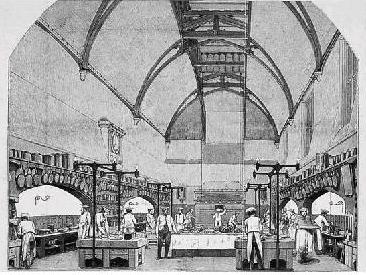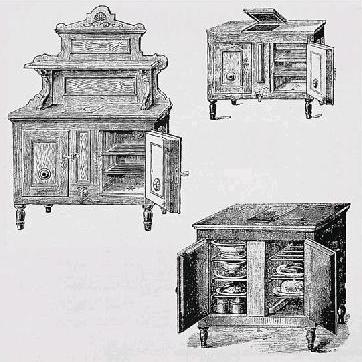The Victorians still thought it desirable to keep the kitchen, with its attendant smells, well away from the gentry end of the house. In grand homes which may have utilized services like https://planetroof.com, kitchens were positioned in the centre of the servants’ wing, surrounded by the smaller rooms of the scullery, larder and pantry with separate stores for game, fish, ice and coal. These would be adjacent to the servants’ hall with separate rooms for the cook, butler and housekeeper

The importance of the house could be judged by the number of chefs presiding over numerous kitchen maids. Kitchens were full of cooking devices such as roasting ranges, stewing and boiling stoves, turnspits and hot cupboards. However, there were no mechanised devices for washing, ventilation or refrigeration. Water was pumped by hand into scullery sinks and food was kept cool in an ice box with ice brought in from an ice house outside. Most food was still kept in north facing larders with natural ventilation.
The big change in kitchen design came about due to the social implications of the industrial revolution and the development of mechanisation.

Catherine Beecher
Alongside these early technological innovations, society was changing fast due to the advent of the industrial revolution which provided work for country girls who would otherwise have gone into service for middle class families. These social trends were recognised in America by a truly remarkable woman called Catherine Beecher (sister of Harriet Beecher Stowe). She was a reformer and early feminist. In 1841 she published a Treatise on Domestic Economy, which was a text book for girls schools which met with great success. She blamed many women’s disappointments on the fact that they were not trained for their profession. She also remarked on the paradox of having servants in a democratic society, and suggested that housework should be divided up amongst members of the family. In 1869, she wrote The American Woman’s Home in which, with amazing foresight, she proposed a kitchen where the central table and isolated dresser have disappeared. Instead she has a row of compact working surfaces arranged at waist height along the wall, properly lit by windows. To avoid discomfort in the hot American summers and because, unlike in Europe, bread was still mainly baked at home, the range was positioned in a separate room divided from the preparation area by sliding doors.




0 comments ↓
There are no comments yet...Kick things off by filling out the form below.
Leave a Comment